Timeless Beauty: Unveiling Chand Baori, India's Deepest Stepwell
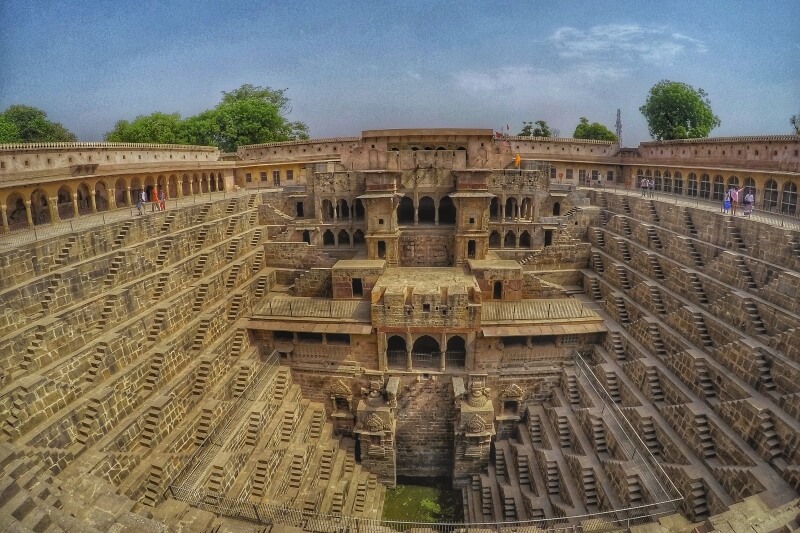
If you ever find yourself in the village of Abhaneri, Rajasthan, you might stumble upon one of India's most underrated architectural wonders, the Chand Baori stepwell. This well has thousands of narrow steps, lined in perfect symmetry, built to lead you down to the bottom of the well. It is an architectural marvel that is a must-visit for history and architecture enthusiasts.
The significance of Chand Baori
Chand Baori is a famous tourist spot with a high historical value. It is a perfect example of India's architectural diversity, created in the 8th century. The intricate patterns on the walls, the architectural design of the stairs, and the exquisite carvings all stand as a testament to the talent and creativity of Indian artisans. The stepwell has a symmetrical architecture makes it stand out from other wells and stepwells in the country. There are precisely 3500 narrow steps that lead to the well's bottom, which was meant to provide a reliable water source for the village residents in ancient times.
The history behind the construction of Chand Baori
King Chanda of the Nikumbha Dynasty commissioned the construction of Chand Baori between 800 and 900 CE. The well was created to store rainwater during the monsoon season, making it a reliable water source throughout the year. The Chand Baori stepwell design indicates the unique architectural style of Northern India that was prevalent during the medieval period. Moreover, the well was also used as a meeting place for locals in the ancient village.
Chand Baori's history and architectural significance make it a must-visit destination for tourists who visit India. Its unique design, intricate carvings, and historical relevance make it a worthwhile destination to explore.
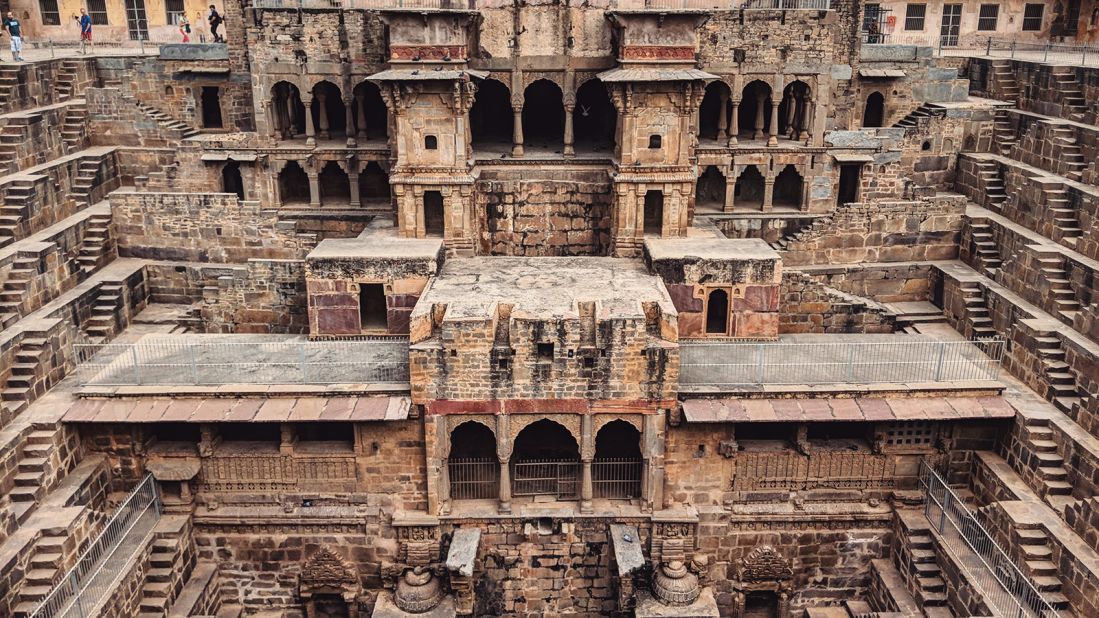
Architecture and Design
If you ever find yourself in the village of Abhaneri, Rajasthan, you cannot afford to miss out on India's hidden treasure, the Chand Baori stepwell. The stepwell's design and architecture indicate India's unique architectural style, which dates back to the medieval period. Let's delve deeper into the architectural design that makes Chand Baori stand out.
Chand Baori architectural design and structure
Chand Baori's structure is symmetrical and has a square-shaped design. At the top, the well measures 20 meters by 20 meters. The stepwell's structure is built so that the steps lead down to the well's water level. It has precisely 3500 narrow steps leading to the well's bottom. The symmetrical architecture of Chand Baori makes it stand out from other wells and step-wells in India.
Details of the intricate carvings and decorations
The walls of the Chand Baori stepwell are adorned with intricate carvings and unique designs. These carvings are undoubtedly the highlighting features of the well, and they reflect India's artistic creativity. The carvings depict various Hindu gods and goddesses, plants, and animals. The staircases leading to the water level have small niches, which add to the well's unique look.
Its historical monuments, like the Chand Baori stepwell, showcase India's architectural diversity. The structure's symmetrical design and intricate carvings make it a unique example of medieval Indian architecture. If you're ever in Rajasthan, don't forget to check out this hidden gem.
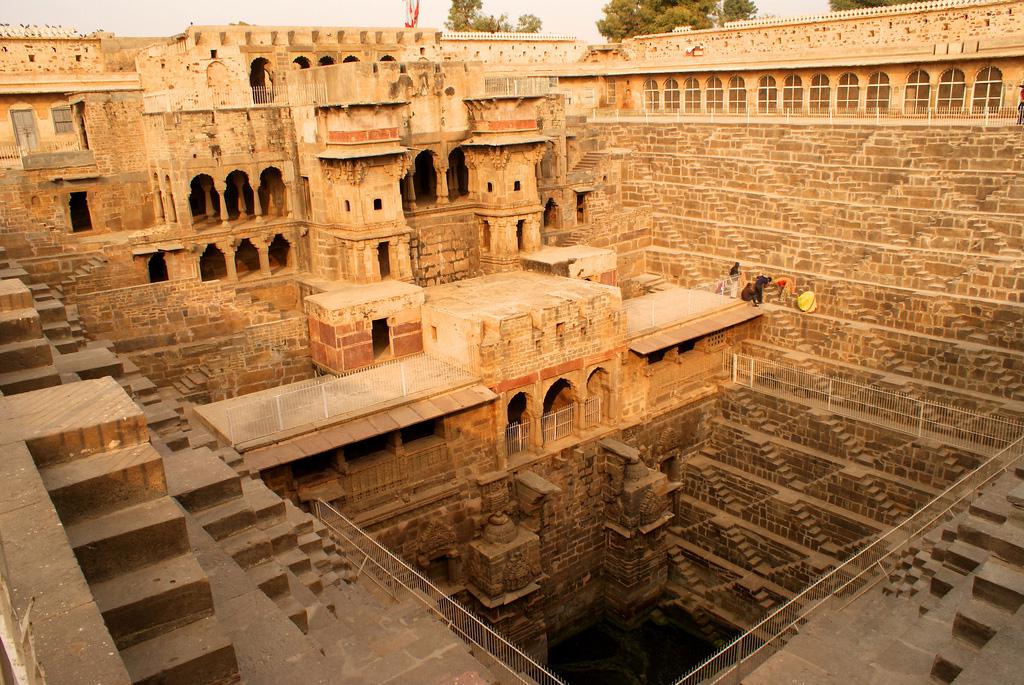
Location and Travel
Directions to Chand Baori
If you plan on visiting the Chand Baori stepwell, you first need to make your way to the village of Abhaneri, which is located in Rajasthan, India. Abhaneri is accessible by road, and you can hire a cab or take a bus from Jaipur, which is approximately 95 km away. Alternatively, you can hire a car and make the journey yourself.
Once you reach Abhaneri, the stepwell is located in the centre of the village, and you can easily find your way to it. The well is near the Harshat Mata temple, and visitors usually visit both the temple and the stepwell.
Best time to visit and travel tips
The best time to visit Chand Baori is between November and February, when the weather is cool and pleasant. During these months, the temperature ranges between 10°C and 25°C, making it ideal for exploring the village and its surroundings.
However, if you want to capture some stunning photographs of the stepwell, we recommend visiting during the golden hour, which is early in the morning or late in the evening. These hours provide the perfect lighting for capturing the intricate details of the stepwell's architecture.
When visiting Chand Baori, wearing comfortable clothing and shoes as you climb down the stepwell's narrow steps is best. Additionally, no restaurants or shops are nearby, so it is advisable to bring water and snacks.
If you want to explore India's unique architectural style, the Chand Baori Stepwell is a must-visit destination. The stepwell's location in the quaint village of Abhaneri and its symmetrical design and intricate carvings make it a hidden gem that should not be missed.
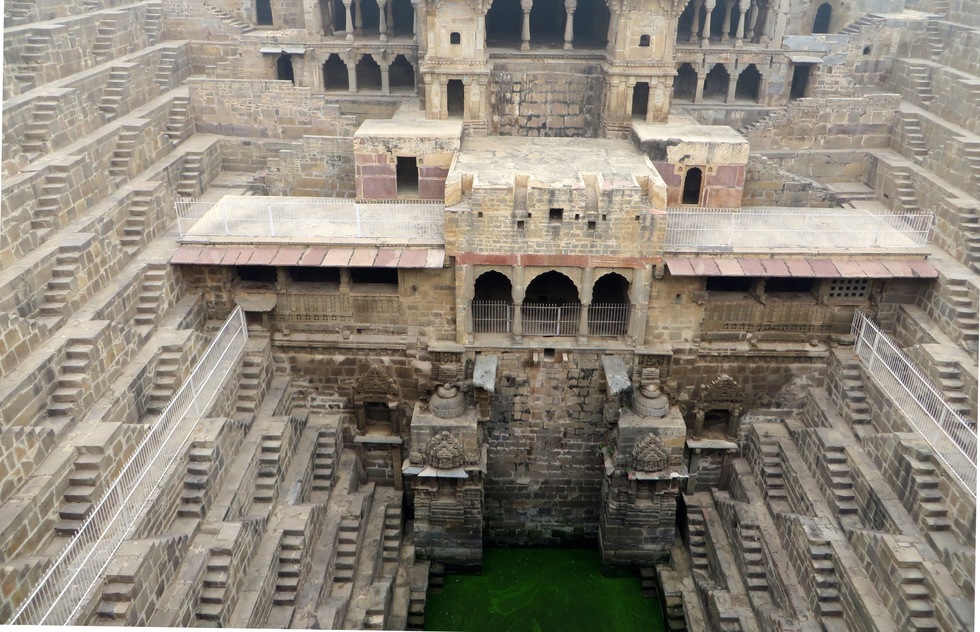
Historical Significance
Meaning and significance of step-wells in India
Stepwells have been significant public places in Indian civilization since ancient times. They were more than just water resources; they served as social and cultural hubs. Stepwells were an integral part of communities, offering resting and shading spaces and areas for religious ceremonies. The structure's intricate carvings make it a piece of architectural art that showcases India's past.
Chand Baori's importance in the ancient era
Chand Baori was built during the 8th and 9th centuries in the Abhaneri village of Rajasthan by the Nikumbh dynasty. Its architectural design and geometrical symmetry are historically significant and bear significance in the Indian subcontinent. Chand Baori's stepped-well architecture showcases the complexity, technical prowess, and beauty of Indian architecture during medieval times.
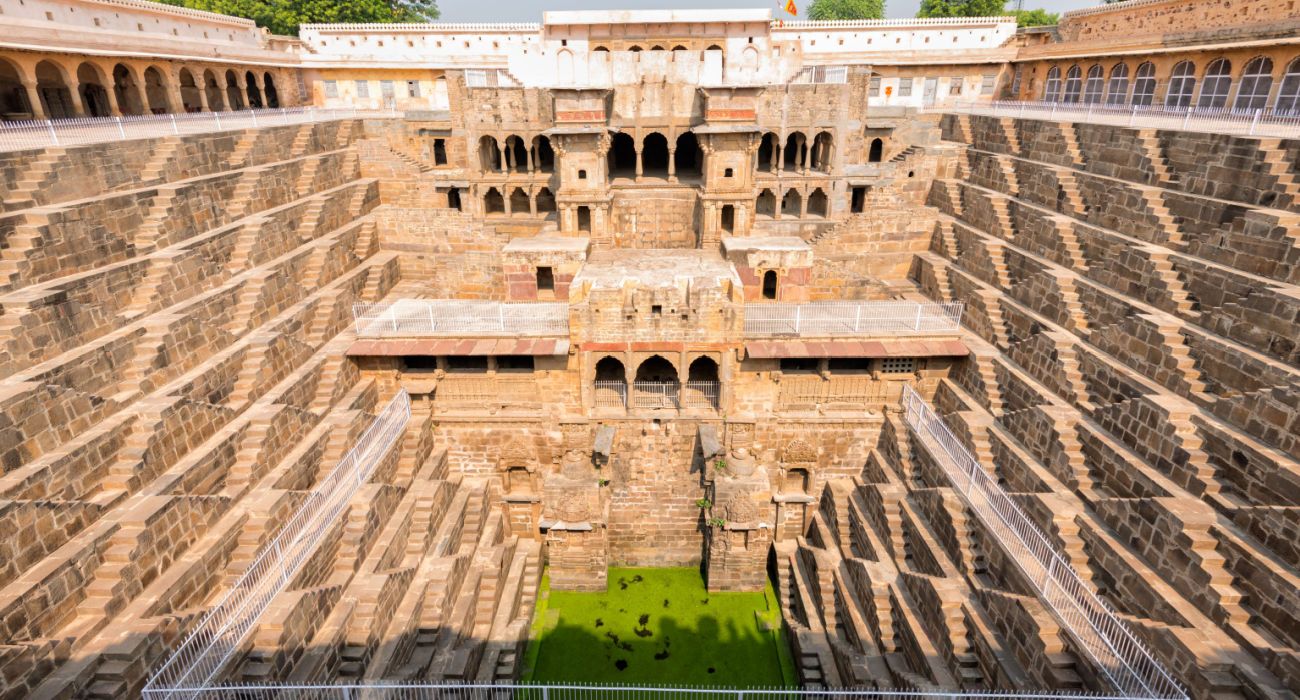
Construction Techniques
Engineering techniques used in building Chand Baori
Chand Baori is a 13-story stepwell that stands approximately 30 meters deep. It was constructed using an ancient technique called 'Vastu Shastra,' an Indian architectural science emphasising the harmony between nature and architecture. The stepwell's construction was necessary to collect rainwater efficiently, considering the region's hot and arid climate.
The construction of the stepwell involved cutting rocks and stones, which were then stacked together using precise engineering techniques to ensure they remained stable. The engineering skills employed by the ancient engineers are impressive since the structure has persisted for more than a millennium.
Unique features and construction challenges
One of the unique features of Chand Baori is its geometrical symmetry, which makes it appealing to visitors. The structure comprises 3,500 steps arranged perfectly symmetrical pattern around the well. Additionally, the stepwell's unique design ensures a cooler temperature as one descends deeper into the well, ideal for people seeking shelter from the sun's scorching heat.
However, constructing such a magnificent structure had several challenges. The region's geology was not uniform, so engineers had to design additional support structures to ensure the well remained stable. Additionally, the long periods of drought made it complicated to obtain water, which was necessary for the workers and animals.
Chand Baori is an architectural marvel that showcases India's rich history and engineering skills used by ancient builders. It is a must-visit location that tourists should explore to learn about Indian civilization's unique aspects and appreciate the artistry and hard work that went into building one of India's oldest and most beautiful step-wells.

Folklore and Legends
Myths and stories surrounding Chand Baori
As a visitor to Chand Baori, you may hear some of the many myths and tales associated with the stepwell. According to one story, the structure was built by an ancient king who wished to construct a staircase to the underworld. Other legends suggest that the well was built by ghosts in just one night. Regardless of the tales you hear, it is safe to say that Chand Baori is a structure steeped in mystery and centuries of history.
Beliefs and customs associated with stepwells in India
Stepwells like Chand Baori have been a part of Indian culture for centuries and are associated with several customs and beliefs. One belief is that the water in the well has healing powers, and people come from far and wide to bathe in it. Many also believe the wells are connected to the divine and offer prayers for prosperity and good health. In some cases, stepwells are also associated with supernatural powers. For example, some believe the Chand Baori stepwell is home to a mythical creature that guards the water supply. Throughout India, stepwells continue to be revered as places of great cultural and religious significance.

Hidden Treasures
Exploring the secret chambers and passages of Chand Baori
As you explore Chand Baori, you may come across hidden chambers and passageways that were once used by royalty. These areas were designed to keep the royals cool during the hot summer months and provide a private space to relax. Some of these chambers are still intact today, and visitors can walk through them to understand what life was like during the medieval period.
Remarkable features of the wells at different levels
The wells at Chand Baori are an engineering marvel, with each level featuring unique architectural details. As you descend the stairs, you'll notice that the temperatures drop significantly, thanks to the well's design. One of the most remarkable features of Chand Baori is the symmetrical design, with each level having the same number of steps. The wells also feature intricate carvings and stone pillars, showcasing the skilled craftsmanship of the artisans who built them. Additionally, the deeper you go, the clearer the water becomes, revealing ancient coins and sculptures that have fallen into the well over time.
Visiting Chand Baori is a unique experience that offers a glimpse into India's rich cultural history. Whether you're interested in the supernatural stories or the remarkable architectural features, Chand Baori has something for everyone. It's no wonder this hidden treasure is considered one of the most magnificent stepwells in the world.

Conservation Efforts
The current state of Chand Baori
Chand Baori is a stepwell located in the village of Abhaneri, in the Indian state of Rajasthan. This ancient monument has existed for over a thousand years and has provided water to the residents for generations. Despite its significance as a cultural heritage site, Chand Baori has been subject to neglect and deterioration over the years. The well has suffered from neglect, vandalism, and pollution, which has led to the degradation of the architectural features and the purity of the water.
Efforts to preserve and protect the heritage site
Recently, a concerted effort has been made to preserve and protect Chand Baori from further deterioration. The local government and non-profit organizations have taken steps to restore the well and improve its infrastructure. A plan has been drawn to address the water pollution and maintain the well's water quality. Efforts have also been made to clean up the surrounding area and develop facilities to cater to the increasing number of visitors.
To aid in preserving Chand Baori, restrictions have been imposed on visitors to the monument. Visitors are not allowed to climb on the structure or throw coins into the well, which can cause damage to the ancient architecture and contaminate the water. In addition, a team of conservationists has been assigned to monitor the condition of the well and to carry out necessary repairs.
Several efforts are underway to conserve Chand Baori and protect it for future generations. These efforts include plans to clean up the area, maintain the water quality, impose restrictions on visitors, and assign conservationists to monitor the well's condition closely. With these ongoing efforts, it is hoped that Chand Baori will continue to be a treasured cultural site for years.
